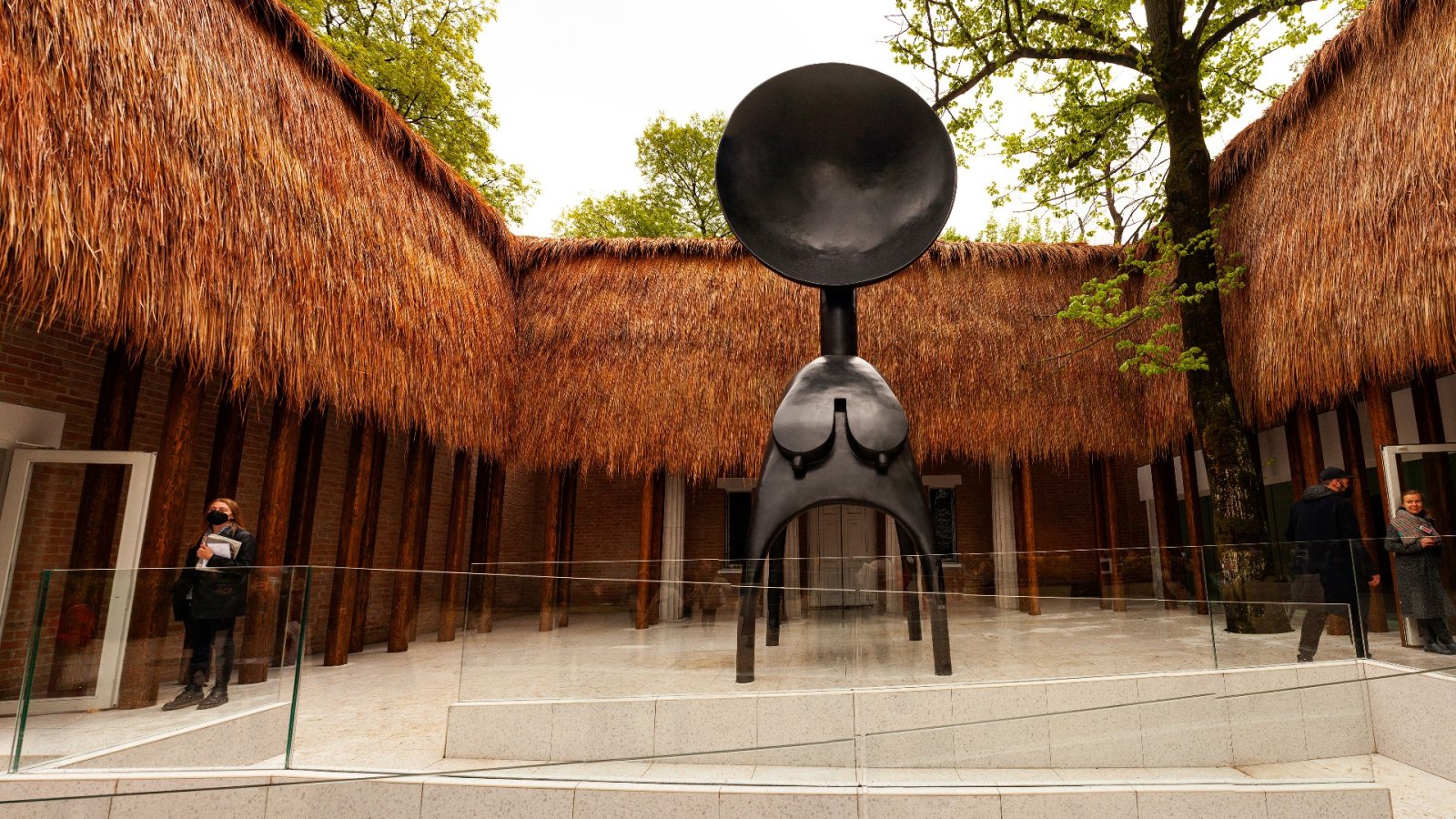2022 saw a resurgence of the art world as blockbuster exhibitions and top festivals, such as the Venice Biennale and Documenta, made their return.
The study and appreciation of past works continued, and new art was added to the canon, with artists continuing to explore and address issues of racism, colonialism, and misogyny in their work. The energy in the art community was palpable. Moreover, this year also brought renewed attention to artists of color and women who had long been tackling these issues in their work. The understanding that nothing is fixed also led to reevaluations of famous works, including the discovery that a beloved abstraction had been hung upside-down for years.
So, let's look at some of the most significant artworks created or presented in a new light last year.
Simone Leigh, "Sovereignty" (2022)
One of the standout features of Simone Leigh's "Sovereignty" at the U.S Pavilion in the Venice Biennale was the striking transformation of the neo-Palladian building. By covering the exterior with a low-hanging thatched roof and wooden supports, Leigh achieved a visual decolonization of the structure. As the first Black woman to represent the U.S at the Venice Biennale, Leigh created a truly exceptional exhibition. She drew inspiration from the 1931 Colonial Exposition in Paris, where colonizing nations presented their cultures and, at times, the people of their territories in dehumanizing displays that reinforced stereotypes.
Coco Fusco, Your Eyes Will Be an Empty Word
Maybe it's too early to determine the defining artworks of the current Covid pandemic, but Coco Fusco's video "Your Eyes Will Be An Empty Word" is a strong contender. The artwork focuses on Hart Island, a landmass near the Bronx that has been used as a burial ground for the unidentified for over a century. In 2020, Hart Island took on a new significance as it became the final resting place for the unclaimed bodies of those who had died from Covid-19 and were buried by prisoners from Rikers Island. Using drone photography, Fusco's camera captures the island from a bird's-eye view, as if seen through the eyes of the nameless who passed.
Hew Locke, The Procession (2022)
Hew Locke's commission for the central hall of Tate Britain's neoclassical building was one of the most talked-about works in London this year. The Procession spans the length of the airy space, featuring dozens of figures dressed in intricate and vibrant garments, caught in the midst of a procession. The purpose of the procession is not entirely clear, leaving room for interpretation whether it is a Carnival celebration, as suggested by the brightly dressed revelers, or a funeral, indicated by the figures in all black, some of whom carry a coffin-like sculpture.
Xaviera Simmons, Align (2022)
Xaviera Simmons' powerful manifesto, painted in white capital letters on a black background, adorns the exterior of a massive rectangular room at the center of the Queens Museum's exhibition space. The room measures 40 feet and the manifesto reads, "Crisis makes a book club" in various parts. This is a clear reference to the book clubs formed by a group of influential, wealthy, and experienced white women in arts, philanthropy, and academia in the wake of George Floyd's murder in 2020, to learn about racism and how to be anti-racist, as the artist stated to the New York Times.
Zineb Sedira, Dreams Have No Titles (2022)
French filmmakers of the postwar era often viewed cinema with skepticism, believing it offered escapist fantasies that were disconnected from real-world issues. But what if those cinematic dreams could inspire political engagement? This is the question explored in Zineb Sedira's powerful essay film "Dreams Have No Titles," which was featured in the French Pavilion at the Venice Biennale this year. The film delves into the search for representations of the Algerian struggle for independence, which seemed to have both a connection and disconnection with the leftist cinema of the time, as the movement drew interest from Italian and French directors, while the voices of those directly involved were largely absent.
Jumana Manna, Foragers (2022)
Plants maintain a sense of innocence even when the land they grow on is recognized as politically charged. This is the case in Jumana Manna's "Foragers," on view in her ongoing exhibition at MoMA PS1. The hour-long film explores, through a mix of documentary and fictional scenes, the consequences and motivations behind the Israeli government's ban on the foraging of wild herbs vital to Palestinian culture and livelihood. The film features quiet, serene tracking shots of hills of diverse colors and textures, traversed by Manna's own family members. It also includes confrontational episodes where actors resist accusations of illegal gathering and discuss the alleged negative impact of foraging on the land.






